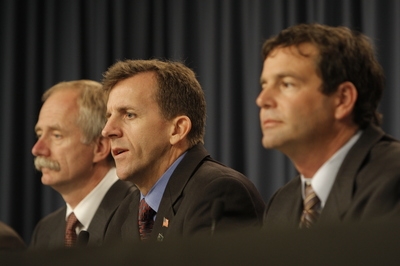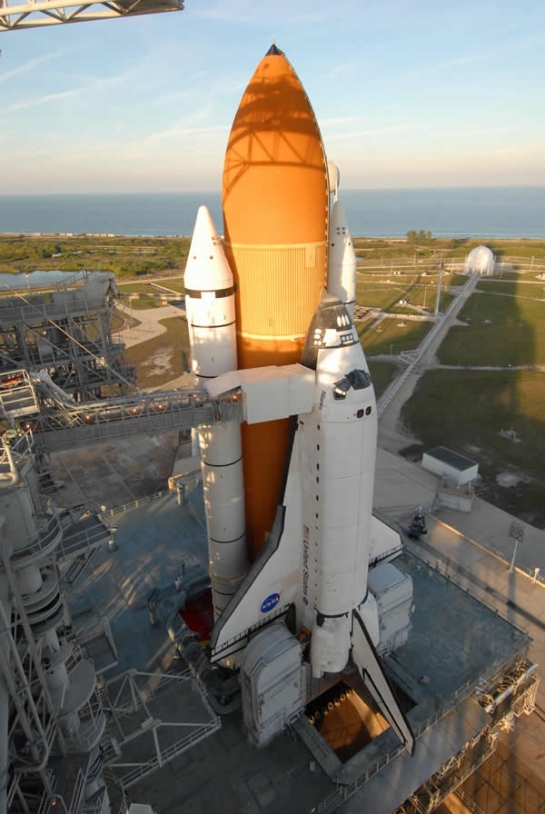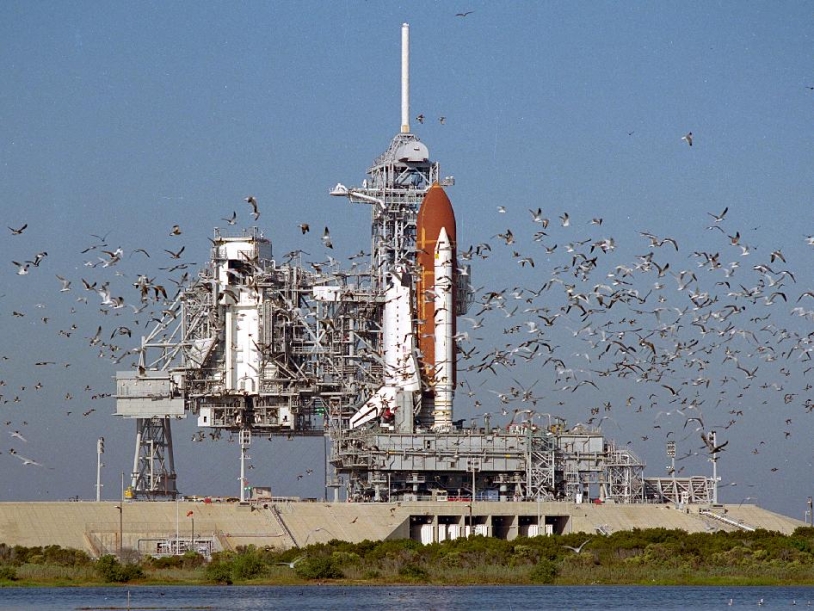10 December 2007
The decision came 1 hr. 30 min. after fuelling with liquid oxygen and hydrogen had begun at 6.00 a.m. EST (12.00 p.m. CET). It was the 2nd time in 72 hours that the tank—containing 2 million litres of fuel—had to be drained.
Why the launch had to be postponed
In a nominal mission scenario, 8 min. 30 sec. after lift-off the engine cutoff (ECO) sensors are supposed to confirm that the fuel tank has emptied and then trigger the shutdown of the 3 Space Shuttle Main Engines (SSMEs).
The ECO fuel gauges are vital, because if the SSMEs continue operating with the fuel tanks empty, they could explode.
A 1st launch attempt had to be scrubbed 6 December when 2 of the 4 ECOs gave a false reading while the tank was being filled, indicating it was empty when it was in fact full.
The ECO fuel gauges are vital, because if the SSMEs continue operating with the fuel tanks empty, they could explode.
A 1st launch attempt had to be scrubbed 6 December when 2 of the 4 ECOs gave a false reading while the tank was being filled, indicating it was empty when it was in fact full.
The same malfunction occurred in July 2005, delaying the launch of Discovery for a week while the fuel tank was changed out.
As the launch window for the STS-122 mission closes 13 December, NASA mission managers initially decided not to roll back Atlantis to the vehicle assembly building and authorized a new launch attempt, with the crew’s backing, provided the 4 ECO sensors were functioning normally.
As the launch window for the STS-122 mission closes 13 December, NASA mission managers initially decided not to roll back Atlantis to the vehicle assembly building and authorized a new launch attempt, with the crew’s backing, provided the 4 ECO sensors were functioning normally.
Flying safe
Sunday 9 December at 9.30 a.m. EST, it was officially announced that the next launch attempt will now be next year, "no earlier than 2 January".
"We wanted to fly on Thursday and we wanted to fly today. But more importantly, we want to fly safe," said Alan Thirkettle, ESA’s ISS Programme Manager.
"We wanted to fly on Thursday and we wanted to fly today. But more importantly, we want to fly safe," said Alan Thirkettle, ESA’s ISS Programme Manager.

After the Columbus module, the shuttle is scheduled to fly the Japanese Kibo laboratory module to the ISS.
At the press conference on the morning of 9 December at the Kennedy Space Center (KSC), Launch Operations Manager LeRoy Cain said that the crew would now be returning to Houston to spend Christmas with their families, while continuing with their training regime.
More about
CADMOS - Preparing and performing microgravity experiments
EPM, a payload rack for investigating human physiology under microgravity conditions
Europe’s contribution to the station’s development
EPM, a payload rack for investigating human physiology under microgravity conditions
Europe’s contribution to the station’s development
Related links
STS-122 mission - NASA website
Columbus - ESA website
Cadmos website
ESA astronaut Léopold Eyharts assigned to European Columbus laboratory mission to the ISS - ESA website
13 February 2007
Léopold Eyharts - Personal data. ESA website
Columbus - ESA website
Cadmos website
ESA astronaut Léopold Eyharts assigned to European Columbus laboratory mission to the ISS - ESA website
13 February 2007
Léopold Eyharts - Personal data. ESA website
Previous news
Columbus - a laboratory equipped for science
22 November 2007
Columbus soon to enter service
17 October 2007
22 November 2007
Columbus soon to enter service
17 October 2007

